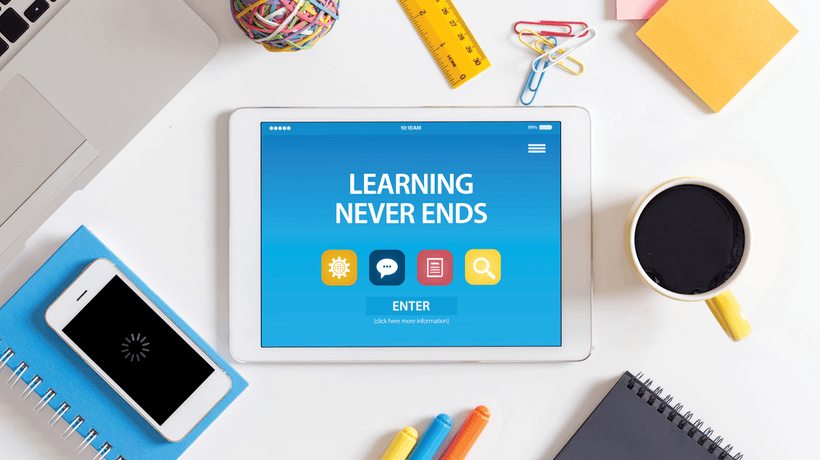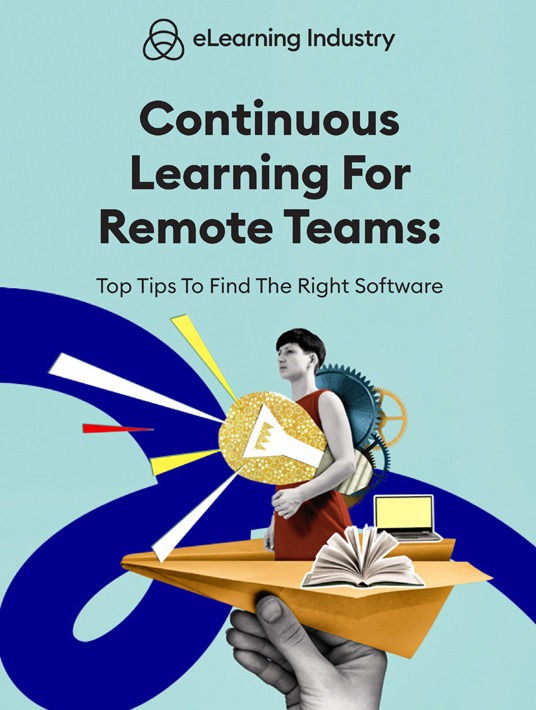
How Continuous Learning Will Help You Retain Your Employees
If you ask the average person how they’d like to spend their days, they’d probably say taking time off to relax. (Whatever their definition of “relaxing” is.) But when we get the chance to do that—bedridden with illness or retired, for example—we quickly get bored. In reality, human beings need novelty. We have a desire to constantly learn things, whether it’s a new video game or the latest pop culture gossip. Most of us find pleasure in reading a good book or article that sparks an “a-ha” moment. So, if your employees always feel like they’re learning and growing, they’re more likely to stay at your firm. How do continuous learning and LMS help you achieve this?

eBook Release
Continuous Learning For Remote Teams: Top Tips To Find The Right Software
This guide will help you find the best software solutions for your telecommuting teams!
1. Give Them Targeted JIT Resources
Every few weeks or so, review your team. You could do a survey, have a sit-down, or subtly observe their work. The aim is to find areas where they’re struggling. Then, design (or find) a JIT resource that can help them stay put. Say you notice a particular team member’s emails don’t hit the spot. Maybe they waffle, and there’s a lot of back-and-forth and reply-all. Send them a minicourse on effective email communication. Make it a point to send every employee a relevant JIT module every month. That way, you’re sure they’ve improved or learned something new. You can even automate this process by posting regular pop quizzes that identify gaps and provide follow-up recommendations. For example, the results of their self-assessment trigger a customized list of tutorials, demos, and modules.
2. Let Them Choose Their Own Long-Term Goals And Path
Part of the reason so many people hate their jobs is their bosses don’t give them breathing room. Autonomy is important to the average adult, and micro-management smothers their spirit. So even if they can’t control many aspects of their work-life, allow them to pick their training path. You can suggest a “core curriculum” based on organizational needs. But as much as possible, let them chart their own training journey. They can use the LMS to ensure their “electives” outweigh their mandatories. Personalized continuous learning in the workplace keeps them motivated and empowered. Employees know that their individual objectives matter just as much as the organization’s desired outcomes.
3. Focus On Self-Pacing
Aside from letting them decide what courses they want to study, don’t rush them. Ongoing training is literally forever, so let them define their own training speed. The LMS can be used to ensure they don’t drop out. If they don’t log on for a few weeks, send them a reminder. And it’s okay to set monthly goals. Outside those loose boundaries, let your employees decide where, when, and how fast they want to complete their course. Yes, you can set guidelines (e.g. “This unit will take two weeks”), but don’t enforce them. It’s infantilizing and potentially risky.
4. Add Training To The KPIs
You want them to learn, consistently and continuously. So, rather than deciding what they should study and how long it should take, be general. As part of their weekly, monthly, or annual performance indicators, include training. Decide—mutually—that you’d like them to do at least one course or certification per quarter. Review their progress during appraisals to ensure they’re making some headway. You can even build a platform on the LMS where they tick off every finished task and completed course. This way, both the trainee and the boss can assess their KPIs at a glance and make necessary adjustments.
5. Build A Solid Reference Library
JIT resources are excellent points of reference, but that’s not the only resource in your library. By nature, moment-of-need training is compressed and summarized. It could be a quick product infographic or a 30-second task tutorial. Your lifelong training library should have the full version of these lessons. It should also contain a repository of policy documents, books, and research caches. When trainees want to dig deeper into a topic, ensure they’re able to find long-form resources alongside emergency training tools. Lastly, the whole library should be easily searchable by keyword.
6. Engage In Low-Pressure Check-Ins
Every parent greets their child with “how was school today?” And most kids respond with “fine,” sometimes accompanied by a grunt, groan, and eye-roll. So, it seems silly to apply this same principle to adult learners. But with continuous learning and LMS, you can do it more effectively. Have trainees log onto the LMS platform at least once a week and update what they’ve learned. It shouldn’t just be the course title or contents summary. Have them write at least 100 words defining their newly acquired skill. It can be in bullet points, voice note, or even interpretive dance (if they’re so inclined). But they can’t copy-paste content from chapter summaries, content pages, or course synopses. They must use their own thoughts and words so you can accurately gauge knowledge transfer and reinforce the information.
Conclusion
LMS can make online (and even blended) learning more effective. But does it have a marked role in staff retention and lifelong training? If it’s personalized, self-paced, and low-pressure. Provide targeted JIT resources, as well as more detailed reference materials. Once a week or so, nudge trainees to upload their learnings to the LMS as a feedback tool for L&D. Allow employees to choose their own path and pace for training. And to ensure they really do train continuously, add it to their KPIs as well.
Continuous learning and LMS can help you keep top talent right where they belong. But which system is right for your continuous learning in the workplace strategy? Search our online directory for solutions that meet every item on your checklist. You can also compare your top choices, read reviews, or sort software by satisfaction rating.
Download our eBook Continuous Learning For Remote Teams: Top Tips To Find The Right Software to extend training to every stage of the employee journey.
